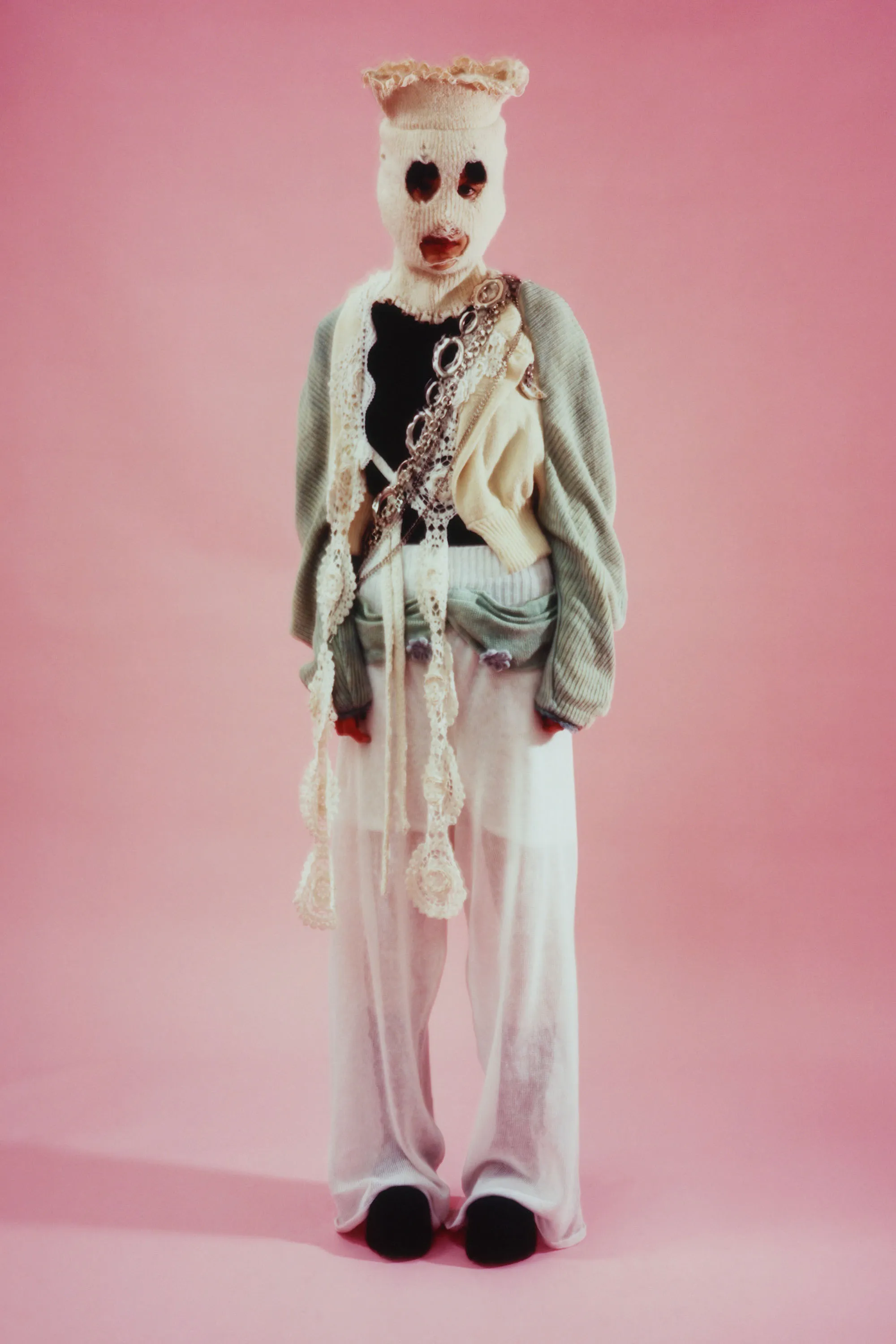
Designer Olivia Ruben’s romantic mix of vintage crochet lace tablecloths and twisted knit silhouettes in subdued colours does more than reference the era of waste by playing with upcycling. Each green garment, from balaclavas to handbags, “breathes and lives like plants”, Ruben says, thanks to a photosynthesis coating, which needs unique but simple care in order to stay climate positive. Unlike plant-based derivatives, for these garments to survive they need sunlight and moisture to actively exhale oxygen. On sale in April, the wearable plants from Ruben’s Photosynthesize collection sold for around $300 each.
Ruben collaborated with London concept store Machine-A and biotech startup Post Carbon Lab to create the collection, which she says “is about finding as many opportunities as we can in this journey into biodesign and biomimicry”.
With the limited-run items already sold out, Ruben is on the forefront of fashion’s biocouture movement, which could unlock access to more sustainable materials and methods of production by offering up edgy potential looks to customers and stretching the use-case of a part of science still largely left in labs.
Biocouture, a mix of material engineering, synthetic biology and delicate sewing, is a new entrant into luxury’s lexicon, coined around 2012 as a term by Suzanne Lee, a Brooklyn-based fashion designer with her then biodesign startup and Launch project introducing the idea how clothes could be manufactured using bacteria. It covers the concept of designing garments and products using living microorganisms such as bacteria. Not to be confused with alternative plant-based materials like Mycelium, these microorganisms live or hibernate in garments. While they’re not technically couture as recognised by the French Federation, the material’s handsewn nature is a nod to the craft, similar to Iris van Herpen’s first vegan haute couture dress made with cocoa husks released during Paris Fashion week last month in a surprising collaboration with Magnum or Jonathan Anderson’s Salone di Mobile effort for Loewe producing straw, reed, and briar raincoats, hats and baskets.
➔ Read the full article on Vogue Business
